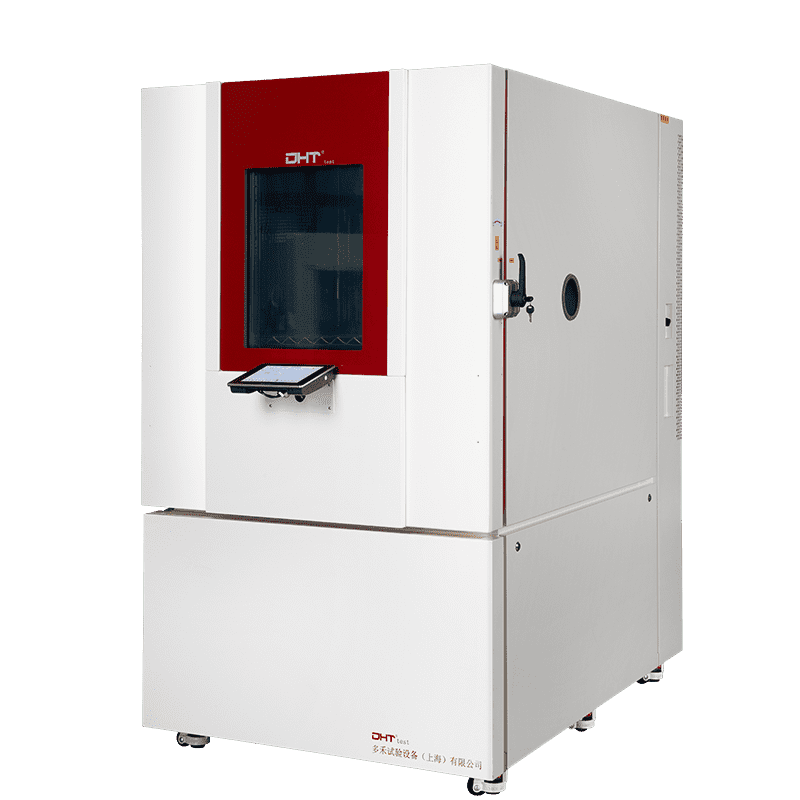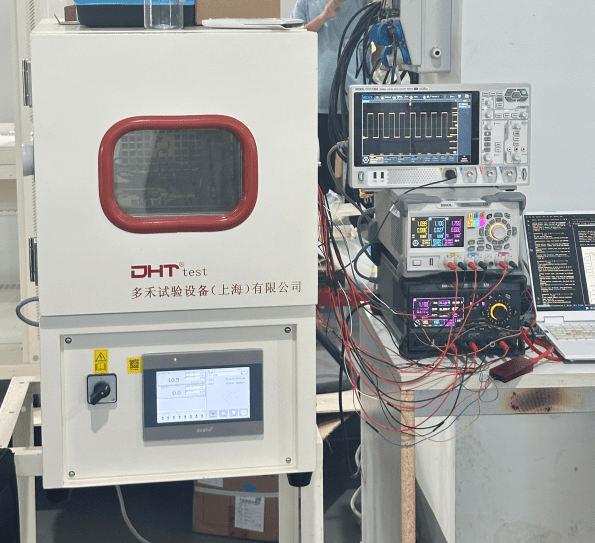Written by Robin
Senior Engineer, Doaho Test (DHT®)
A precise set of technical parameters is the key to unlocking reliable environmental testing—and your first line of defense against costly procurement mistakes.
In laboratory settings, the benchtop environmental chamber plays an indispensable role. It safeguards product quality and verifies research and development outcomes. With countless models available on the market and often complex technical specifications, the ability to correctly interpret key parameters directly determines whether you can select equipment that truly meets your testing needs while ensuring long-term reliability.
This article will provide an in-depth explanation of the core parameters of benchtop environmental chambers, helping you build a clear framework before purchasing and make informed decisions.
Temperature Range: Defining the Boundaries
Temperature range is the most fundamental parameter, but it reflects crucial differences in underlying technology.
-
Low-temperature limit: Commonly specified as -40℃, which is typically achieved using a single-stage compressor system. However, performance tends to drop significantly below this point. To achieve stable operation at -70℃, a cascade refrigeration system is required—an important factor influencing both cost and reliability at extreme low temperatures.
-
High-temperature limit: +150℃ or higher depends on heater capacity and distribution. Poorly distributed heating elements may cause hot spots or uneven temperatures, leading to distorted test results.
Therefore, the temperature range is not just a set of numbers—it is a direct reflection of the refrigeration and heating system design.
Temperature Uniformity: The Credibility of Results
Temperature uniformity is one of the most critical indicators of chamber performance. A nominal specification of ±0.5℃ may look straightforward, but it raises several questions:
-
Were measurements taken under empty or loaded conditions?
-
After how long of stabilization?
-
How many test points were measured, and where were they located?
Poor uniformity means samples in the same batch may experience different conditions, undermining result comparability and reliability. When evaluating, request test reports based on recognized standards (such as GB/T 10586) rather than relying solely on catalog values.
Temperature Fluctuation: Control Stability
Fluctuation describes the stability of temperature over time. High-quality chambers typically maintain it within ±0.3℃.
This capability is closely tied to the control system. Modern chambers often employ PID (Proportional-Integral-Derivative) control algorithms, which dynamically adjust heating and cooling to maintain stable conditions. Excessive fluctuation leads to inconsistent environments and poor repeatability of results.
Heating and Cooling Rates: Efficiency and Real-World Relevance
Heating and cooling rates define how quickly the chamber can simulate environmental changes.
-
Heating rate: Commonly specified as 3℃/min or 5℃/min, but usually measured under empty-chamber conditions, meaning actual performance during real testing is often slower.
-
Cooling rate: Achieving higher cooling rates requires larger compressors, which increases both cost and energy consumption.
Nonlinear performance should also be considered: many chambers cool faster in the higher-temperature range but slow significantly as they approach the lower limit. Always request complete heating/cooling curves to better understand true performance.
Humidity Range and Control Accuracy: The Greater Challenge
Humidity control is often underestimated, yet it is critical for testing electronics, protective coatings, and material durability.
-
Humidity range: Typically 20%RH to 98%RH, with high-end systems offering wider ranges.
-
Control methods: Common types include boiler-type humidification (high precision but slower response) and ultrasonic humidification (fast response but lower accuracy, with higher water quality requirements).
-
Uniformity and fluctuation: Top-tier systems can maintain ±2%RH fluctuation and ±3%RH uniformity—figures that are often more telling than the nominal humidity range.
Humidity regulation is inherently more challenging than temperature, making it an essential factor in equipment selection.
Inner Chamber Material and Structural Design: Durability and Maintenance
The inner chamber is typically constructed from 304 stainless steel, providing both corrosion resistance and strength. Rounded interior corners are preferable to sharp edges, as they are easier to clean and reduce stress concentration.
Other design details, such as heater placement, airflow design, and insulation quality, directly influence both temperature/humidity distribution and long-term operational safety.
Control and Monitoring Systems: The Value of Intelligence
Modern benchtop environmental chambers are as much about intelligent systems as they are about hardware.
-
User interface: Touchscreen displays and multi-language support are now standard, making operation intuitive.
-
Data logging: Automatic recording of operating parameters and alarms, with export functionality, ensures traceability and analysis.
-
Remote monitoring: Network connectivity enables real-time monitoring, greatly enhancing convenience and efficiency.
-
Programmable control: Multi-step programming, with looping and jump functions, allows for highly automated testing.
For laboratories conducting frequent testing, these smart features are often as valuable as the core mechanical performance.
Safety Protection: The Bottom Line of Reliability
A well-designed chamber must include robust safety protection systems:
-
Independent over-temperature protection (preferably hardware-based rather than software-only);
-
High-pressure protection for the refrigeration system;
-
Fan overload, leakage, and water shortage protection.
Together, these safeguards form the last line of defense, ensuring safe and reliable long-term operation while preventing costly accidents.
Conclusion: Decode Parameters, Purchase with Confidence
Interpreting the technical parameters of a benchtop environmental chamber is like deciphering a set of “performance codes.” Each number reflects a specific dimension of the chamber’s true capabilities.
During procurement, do not base decisions solely on catalog data or price. Instead, request detailed test reports and, where possible, arrange for sample testing. Only through verification can you ensure that the equipment will genuinely meet your application needs and provide solid assurance for product quality and R&D efficiency.
If you have questions about specific parameters or application scenarios, please contact the DHT® technical team. We are here to provide expert consultation and tailored solutions for your testing needs.


